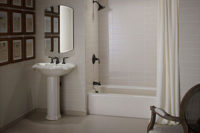Best Practices For Operating Great Showrooms
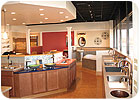
I am so very pleased and proud to write a 50th anniversary article for Supply House Times. This terrific magazine has been serving this great industry for 50 years! I’m not sure what the “life” of trade magazines is, but I’ll bet very few have had the impact and lasting power that Supply House Times has.
My history with this industry goes back almost to Charlie Horton’s very first edition. I knew Charlie pretty well. We shared meals in each other’s homes. We knew each other’s families - and we both had a passion for showrooms. We both knew deep in our minds and hearts that showrooms should be an important part of the plumbing wholesaler’s business. If Charlie were looking down on us right now, he’d be very pleased with how far the showroom part of the wholesaler’s business has progressed. Charlie could be a controversial “old hoot,” but nobody - I mean nobody - could question his passion and well-meaning efforts for our industry. God bless Charlie Horton and congratulations to Supply House Times. Our industry wouldn’t be what it is today without you!
To help commemorate this milestone I’ve put together a list of about 50 Best Practices that I believe every showroom should incorporate into the management of their operations. Best Practices should be written, learned and practiced by all members of the showroom team. Take this list and customize it for your business. It will get everyone walking and talking the same message. Consistency in how you run your showroom is paramount for maximum success.
The following Best Practices have been broken out by categories but have not been put in any order of importance. That’s your job. Some items in this list only management can respond to and act upon - but many are for every member of your team. I’ve covered a lot of these in past articles, but this will serve as the “best of the best” practices. I don’t have the space to go into great detail, but most items are self-explanatory. If there are any you’d like more explanation on, just e-mail me and I’ll be glad to elaborate.
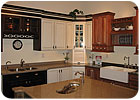
General Best Practices
Business Plan. Develop a written, well-thought-out 3-year business plan for the showroom part of the business.Location, Location, Location! Your showroom has to be conveniently located to your main customer base. Your primary “shoppers” are most likely homeowners, designers and builders. Being accessible to these people is important.
Facility. A good-looking building with nice landscaping creates a great first impression.
Outside Approach. The front windows and entrance also are part of this all-important first impression.
Inside Approach. The first step inside the front door will give your prospects the overall look and feel of your showroom within the first 30 seconds. You can win or lose them right here.
Welcome. Meeting and greeting the client has to be done quickly, with enthusiasm, a big smile and a sincere “Welcome, we’re glad you’re here” opening statement.
Qualifying Prospects. Within 10-15 minutes you should learn all you need to know as to whether or not the prospect is someone worth your time and effort.
Work Stations. Work stations must be conveniently located and neat and clean.
Product Diversification. Showing and selling a nice diversification of products is important. Today’s clients want “one-stop shopping.” Offering more products and services will not only bring in more clients, it will add to revenues and profitability.
ADA Accessible With Easy Flow. Get help from a professional if necessary.
“Wow” Displays. Have at least one “wow” display and a couple of working displays.
Group Like Products Together. You can do this by product and style.
Display Boxes. Use your own boxes and boards for displaying products.
Model Numbers And Prices. Put YOUR model numbers and YOUR prices on all display products.
Signage. All signage must be professionally done and consistent.
Cleanliness. The entire showroom must be clean - all the time.
Theme. The showroom style, color and theme must be up-to-date and attractive.
Displays. Displays must be well accessorized. Make all display areas feel like home.
Lighting. Good lighting is very important. Get professional help if necessary.
No “Holes” Ever! Complete all displays using strainers, waste and overflows, etc. Never “rob” products off display.
Up-To-Date And Current. All displays and products must be kept current and up-to-date. Outdated product does you no good, even if it looks good.
Restrooms. Public restrooms must be stylish and clean.
Technology. Utilize flat-screen monitors to tell the story of your company and provide product information.
Software. Showroom software must be customer AND employee friendly.
Consistency. The overall look and feel of the showroom must be consistent with the price point of the products being sold. Higher-end products demand a higher-end feel and look.
Top Management Involvement. Top management has to be very involved in the vision and operation of the showroom.
Learn Retail. Everyone must learn retail and merchandising. The showroom business is very different from the wholesale side of the business.
Teamwork. The showroom side of the business and the wholesale side have to understand each other and work together.
Your “Best Practices.” You should develop a written list of Best Practices that everyone follows.
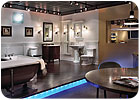
Marketing Best Practices
Potential Clients. Market the showroom to ALL potential customers and sell to them! A buyer is a buyer!Margin. Make margin more important than sales volume. Set a goal of 35%+ for your gross profit margin on sales. To achieve this, the discount to plumbers must be smaller than the discounts extended on over-the-counter and out the warehouse door sales.
Marketing Plan. Write an annual, detailed marketing plan. This should include a budget (3-5% of showroom sales) and an itemized list of all advertising, promotions and public relations activities. Identify who, what, when, where, etc.
Showroom Hours. Have retail, customer-friendly showroom hours. This means being open on Saturdays and possibly one evening. Encourage appointments, but don’t make them mandatory.
Target Customer. Determine who your target customers are going to be. Then market the showroom to them.
Quote Time. Complete and deliver to the customer all quotes within 48 hours.
Ordering Product. Order product in two phases: rough and trim. This saves money from being tied up in inventory too long.
Tag and Hold. Offer “tag and hold” for up to 45 days. Mark every product showing what room it will be installed in.
Delivery. Offer jobsite delivery and charge a fee for it if appropriate.
Freight Charges. Be sure to cover your incoming freight charges - and make a little on it!
Closing Area. Have an area to lay out plans, talk and close the sale.
Refreshments. Serve refreshments in a first-class way using china cups, etc. Offer an assortment of beverages and, if appropriate, snacks.
Advertising. Be creative with all advertising, promotions and public relations.
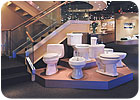
Human Resource Best Practices
Job Descriptions. Have detailed job descriptions for all showroom personnel.Performance Evaluations. Do twice-yearly job performance evaluations with all showroom personnel.
Training Program. Develop a detailed, written training program. Conduct at least two staff meetings a month to accomplish training and to communicate with employees on all items of importance.
Teach Selling Skills. Learn the techniques of meeting & greeting, qualifying, presenting products and services, articulating value (of salespeople, the company, products and services), making concerns and objections go away, closing the sale and after the sale activities. Learn how to do all of these things well and then practice, practice, practice!
Policies And Procedures. Write a detailed Policy and Procedures Manual that spells out all activities so everyone will do everything the same way.
Do these things the BEST and be the best: hire, train, motivate, communicate, compensate.
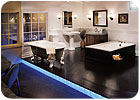
Financial Best Practices
Profit Center. Treat the showroom as an independent profit center. Know whether it is making or losing money. Know what the return on your investment is.Financial statements. Generate monthly and annual financial statements for the showroom. Study them and react to them. They are your report card on how well the showroom is performing.
Budgets. Do an annual and monthly budget for the showroom. Use this as a guideline and eliminate surprises.
Sales And Margin Goals. Develop monthly and annual sales and margin goals for all sales consultants. Create an incentive program that rewards achieving and exceeding these goals.
How many of these Best Practices do you follow today? How many others should you incorporate into your business? You won’t agree with all of them, and that’s okay. I’ve drawn from my experience running a successful showroom business and from 12 years of working with 100+ very successful showroom businesses. Please use this list as a starting point to write your own list of Best Practices. If you have questions or need help, just e-mail me!
Congratulations to everyone at Supply House Times - past and present - for a terrific first 50 years. May the next 50 be even better!
Looking for a reprint of this article?
From high-res PDFs to custom plaques, order your copy today!





